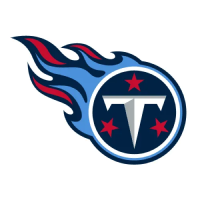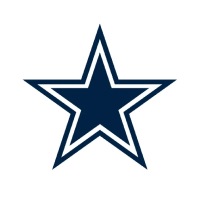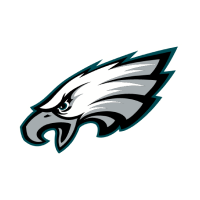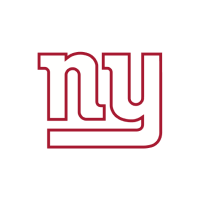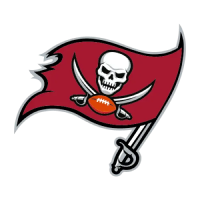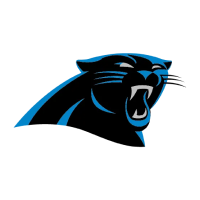Does Sam Ehlinger get drafted? What about Feleipe Franks? Or Ian Book?
These may not feel like important questions to you, but they are to me. Ehlinger, Franks, and Book represent the bottom of the 2021 quarterback class, and while the top has gotten a ton of attention, the third- and fourth-tier passers simply haven’t. And that’s because it isn’t a strong group.
It’s important to calibrate expectations from the jump: It’s rare that Day 3 quarterbacks actually become anything substantial. You will see at least one Day 3 quarterback from any given class start a game for an outlandish circumstance, but the results of that outing can range from the downright catastrophic (Nathan Peterman) to the merely unoffensive (Jeff Driskel). Even the peaks of Gardner Minshew were not enough to hold Trevor Lawrence at bay, nor elicit much interest on the trade market. The only quarterbacks drafted on Day 3 over the last 10 years to start at least eight games in a season are Kirk Cousins, Dak Prescott, Tyrod Taylor, Trevor Siemian, Brett Hundley, and Minshew. Only two of those players will enter 2021 as a starter.
It may feel like Day 2 quarterbacks are better; they really aren’t. They get more opportunity—in the same timeframe, 17 Day 2 quarterbacks have a season with at least eight starts—but only four of the 17 will enter next year as a starter. But for the limited expectations on developmental or middle-round quarterbacks, this is still a particularly thin group. After the Big 5 (Lawrence, Zach Wilson, Justin Fields, Trey Lance, and Mac Jones) leave the board on Day 1, the Day 2 offerings start and end with Kellen Mond (Texas A&M), Kyle Trask (Florida), and Davis Mills (Stanford). Each at times has been rumored to approach the fringe of the first round, as middle-round quarterbacks are often rumored—but none of the group really holds up.
Mond is viewed as an exciting pro prospect for his NFL-caliber arm and NFL-caliber throws. Both are evident in his film; but Mond started 44 games across his career with the Aggies, including the last 34 under head coach Jimbo Fisher in a “pro-style” offense. Mond could have declared as a junior, but didn’t, because he was considered a middle-round player. Back at school for his senior year, he didn’t show much improvement. Mond remained a quarterback with shaky accuracy, and for all of his arm strength, had the worst accuracy on deep balls of all quarterbacks I charted this year.
Mills is easier to understand as a project player; for Mond’s 44 starts, Mills only had 11. Mills also has the advantage of a high recruiting background, as the 15th ranked recruit, No. 1 pro-style quarterback, and a 5-star out of Georgia. Mills had offers from Alabama, Georgia, Michigan, and USC. He elected to go to Stanford.
Stanford’s run-heavy philosophy, Mills’ injury history, and the presence of K.J. Costello ahead of him on the depth chart all make Mills one of the least experienced passers to declare in recent years. Mills only brings 11 starts and 438 passing attempts to the table—only Lance has fewer passes in this class. Since Mills has the background and the inexperience, teams want to develop him; but unlike many developmental prospects, Mills doesn’t have top-tier traits. He isn’t quick, his arm isn’t that strong, and while he has pro size, he doesn’t have much toughness in the pocket. On top of it all, Mills’ lack of experience shows up in his mechanics and in his accuracy. When throwing beyond the line of scrimmage, I charted Mills as less accurate than players like Mond and Jamie Newman (Wake Forest), each clearly have more desirable physical tools as well.
And finally, Trask. The long and the short of the matter with Trask is: If he couldn’t win the starting job at his high school, he’s going to have big gaps in his college game, and even bigger gaps in the pros. Trask does not throw with ideal velocity and views every throwing window as a touch throw. His ball placement into tight windows was second-lowest in this class, and even with such a talented cadre of pass-catchers, his completion percentage was below all others. Trask was challenged by tight college coverage; NFL coverage is much tighter, and I don’t think his arm strength will hold up under that pressure.
In that Mills, Trask, and Mond are not Round 1 quarterbacks; they have weaknesses, so it isn’t too interesting to detail them. Mason Rudolph, a player much like Trask, was drafted in the third round; the high recruiting, little experience argument on which Mills will be drafted was used to justify Jarrett Stidham in the fourth round. (Stidham started a lot more games, but not in a pro-style offense.) The NFL has established a precedent for selecting these players, and while their ceilings are long-term backups, that’s an important role on an NFL depth chart—especially if a team can get it for cheap.
But for these imperfect players to have Day 2 buzz indicates just how weak this class is on Day 3. After those names, who remains? Newman, who could have seen his stock blossom with a transfer year at Georgia, elected to opt-out of the 2020 season and declare for the 2021 draft. He’ll get drafted, but from a gimmicky Wake Forest offense, his pro projection is muddy, so it isn’t a guarantee. Franks could get drafted because his athleticism could detail a Logan Thomas-esque path to TE play; Ehlinger might have the same argument for more of a fullback or H-back role.
With only eight quarterbacks a lock to get drafted, we could be looking at one of the thinnest quarterback classes of recent memory. Only once in the last 20 drafts have fewer than 10 quarterbacks been selected: The storied class of 2015, where Marcus Mariota was second off the board and QB3 Garrett Grayson was 75th, had only seven passers selected. Only one other draft (2017) had fewer than 11.
Teams love quarterbacks and will always take swings. But this isn’t the best class for it. With a free year of NCAA eligibility, draftable quarterbacks like Desmond Ridder of Cincinnati, Dustin Crum of Kent State, and Brock Purdy (Iowa State) all went back to school in an effort to push their rising programs over the precipice and into national competitiveness. It is a tremendously top-heavy quarterback class, and we could see a record low number of quarterbacks selected by Saturday when it’s all said and done.
Filed In
Related Articles
NFL Draft
Arik Gilbert Doesn’t Need Big Workload To Be A Top NFL Draft Pick
- Aug 22, 2022
NFL Draft
2023 NFL Mock Draft: Marino 1.0
- Aug 22, 2022
Written By









